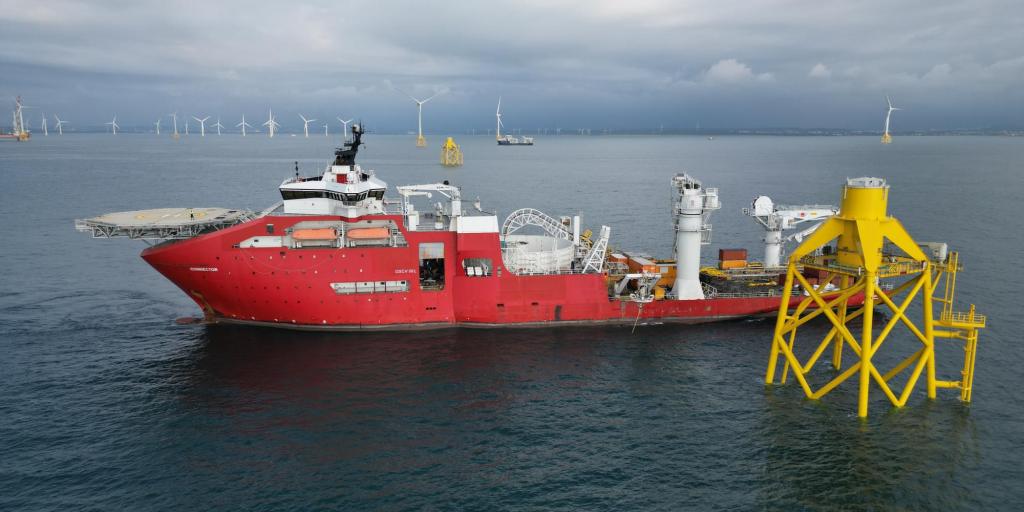Jan De Nul Group successfully completed the installation of the 47 jacket foundations and 188 pin piles, the 4 export and 47 inter array cables on the Formosa 2 Offshore Wind Farm in Taiwan. With the achievement of these major milestones, Jan De Nul brings its EPCI scope onto the final straight towards completion in the coming weeks.
188 pin piles
Jan De Nul subcontracted EEW KHPC for the fabrication of 188 pin piles, some with a weight of over 270 tonnes and a length up to 79 metres.
In 2020, the piles were transported from the fabrication yards in South-Korea and Malaysia to the marshalling harbour in Taichung, Taiwan. Heavy Lift Vessel Seaway Yudin commenced installing the piles in water depths up to 55 metres, with the final pile installed on 22 August 2022.
During the installation activities, Jan De Nul also managed the underwater noise monitoring and marine mammal observation in compliance with the environmental restrictions and permits.
47 jacket foundations
Jan De Nul ordered the jacket foundations from Sembcorp Marine Ltd. and Saipem S.A. Fabrication at the yards in Indonesia commenced in 2020. With a height of up to 91 metres and a weight of over 1,600 tonnes, they are amongst the largest and heaviest jackets in the offshore wind industry, equalling the height of a typical 30-floor building.
From October 2021 to July 2022, three heavy transport vessels delivered all jackets to the marshalling harbour for intermediate storage and final preparation before installation, which commenced in April 2022 with Heavy Lift Vessel Bokalift 1.
The final jacket was installed on 26 August 2022, thereby completing the foundation fabrication and installation scope.
4 export and 47 inter-array cables
In 2020, Jan De Nul subcontracted the manufacturing of 34.5 km of export cables and 87 km of inter-array cables to LS Cable. Jan De Nul’s shallow water Cable-Laying Vessel Willem de Vlamingh and Multipurpose Vessel Connector picked up, transported and installed the cables in 2021 and 2022 respectively. Both vessels also acted as trenching support vessel to bury the cables with a jet trencher in certain sections of the cable routes. Jan De Nul’s Trailing Suction Hopper Dredger Niña and Francis Beaufort performed pre-trenching in the harder sections.
The four export cables were pulled through the drilled HDD pipes nearshore in 2021, and were finally joined onshore with the land cables at the transition joint bays. Installation of the 47 inter-array cables commenced in May 2022 and was completed on 1 September.
In the coming weeks, Offshore Support Vessel Orient Constructor of local partner DFO will continue facilitating walk-to-work access for the teams finalising the terminations of the cables, allowing the energization of the entire wind farm.
Offshore Support Vessel Grand Canyon 2 and Jan De Nul’s Connector will complete the remaining cable burials and stabilizations in the course of September.
“Our recent EPCI projects demonstrate our multidisciplinary approach and ability to assist our clients in their ambition to execute ever larger and more complex projects. It is our aim to involve local suppliers as much as possible in the execution of all our current and future projects in Taiwan.” said Peter De Pooter, Manager Offshore Renewables for Jan De Nul Group.

























